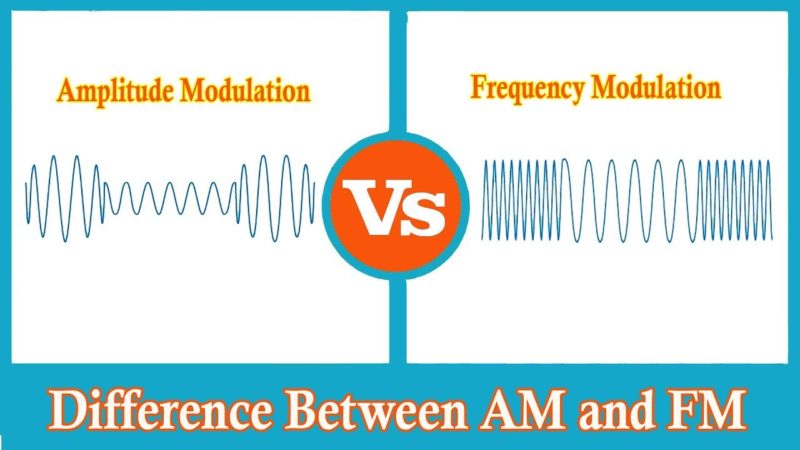What is the difference between amplitude modulation and frequency modulation?
AM and FM are the main methods of transmitting signals in radios. The carrier wave in both methods is modified to transmit data, information, and sound.
The core difference between AM and FM receiver is based on the modification of data. The article provides a detailed insight into the differences both in table and point form.

What Is Amplitude Modulation?
AM is a broadcasting technique where the amplitude carrier varies depending on the information signal. The broadcasting radio signal was discovered in 1870 for audio production.
When the amplitude decreases, the carrier wave decreases, and vice versa. The receiver is normally connected to a demodulator which monitors the changes in the amplitude.
What Is Frequency Modulation?
FM is a modulation where the frequency of the carrier wave is modified according to the signals that carry information.
The broadcast radio signal has large bandwidth when compared to AM. The large bandwidth help to offer much quality sound effect.
Comparison of Table: AM vs FM
| Basic Terms | AM | FM |
| Abbreviation For | Amplitude Modulation | Frequency Modulation |
| History and Origin | It was discovered in the 1870s for audio production | It was discovered in the 1930s for FM radios. |
| Bandwidth | 30kHz | 180kHz |
| Frequency Range | 535 to 1705 KHz (OR) Up to 1200 bits per second. | 88 to 108 MHz. (OR) 1200 to 2400 bits per second. |
| Modulating differences | Frequency and phase remain the same | Amplitude and phase remain the same |
| Noise | Highly susceptible to noise | Less prone to noise |
| Complexity | Transmitter and receiver is simple | Transmitter and receiver is complex |
| Zero crossings in modulated signal | Equidistant | Non- Equidistant |
| Year of discovery | The 1870s | The 1930s |
| Pros and cons | Quite affordable but have poor sound quality | Less susceptible to interferences but can be affected by physical barriers. |
Core Difference between Amplitude Modulation and Frequency Modulation
- AM has a simple circuit design whereas FM has a complex circuit design
- AM is quite affordable while FM is too costly
- FM require higher bandwidth range whereas AM require a lower bandwidth
- AM tends to operate in a medium and high frequency while FM operated in upper VHF and UHF range.
- The signal received under AM is of low quality while that of FM is of high quality
- The amplitude carrier wave of AM is modified in order to send the information while the frequency carrier wave of FM is modified to send information.
- The transmission of AM has a larger range while that of FM has a smaller range
- AM is highly prone to signal distortion and degradation while FM is not prone to any of these factors.
You May Also Like:
- Twisted Pair Cable Vs Coaxial Cable Vs Fiber Optic Cable
- Difference between One Way and Two Way ANOVA
- Differences between SQL and HiveQL
- Difference between SQL and T-SQL
Comparison Video
Summary
Both amplitude and frequency modulation are used to transmit information by modification of the carrier signal.
The core difference between amplitude modulation and frequency modulation is based on the area of coverage.
More Sources and References